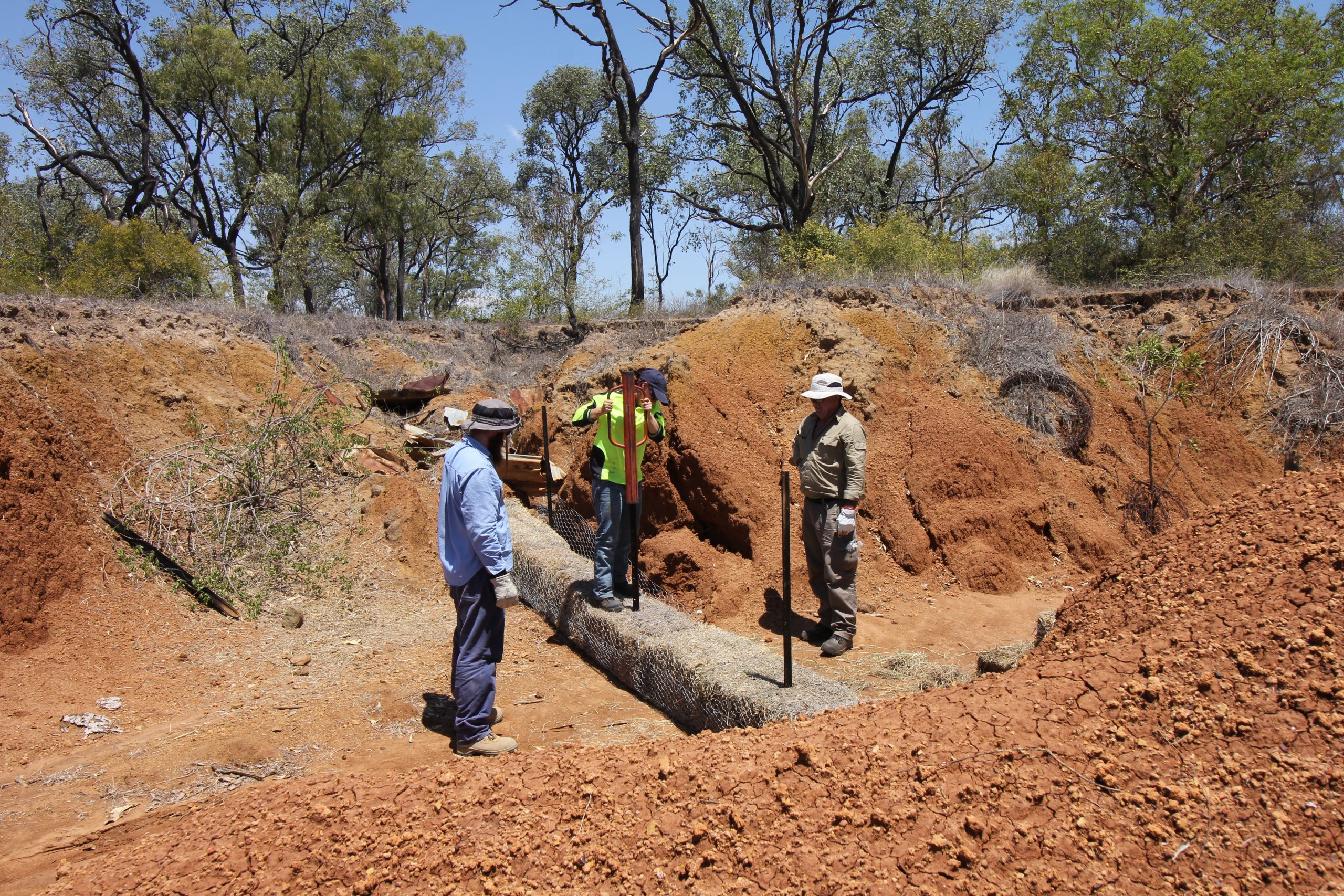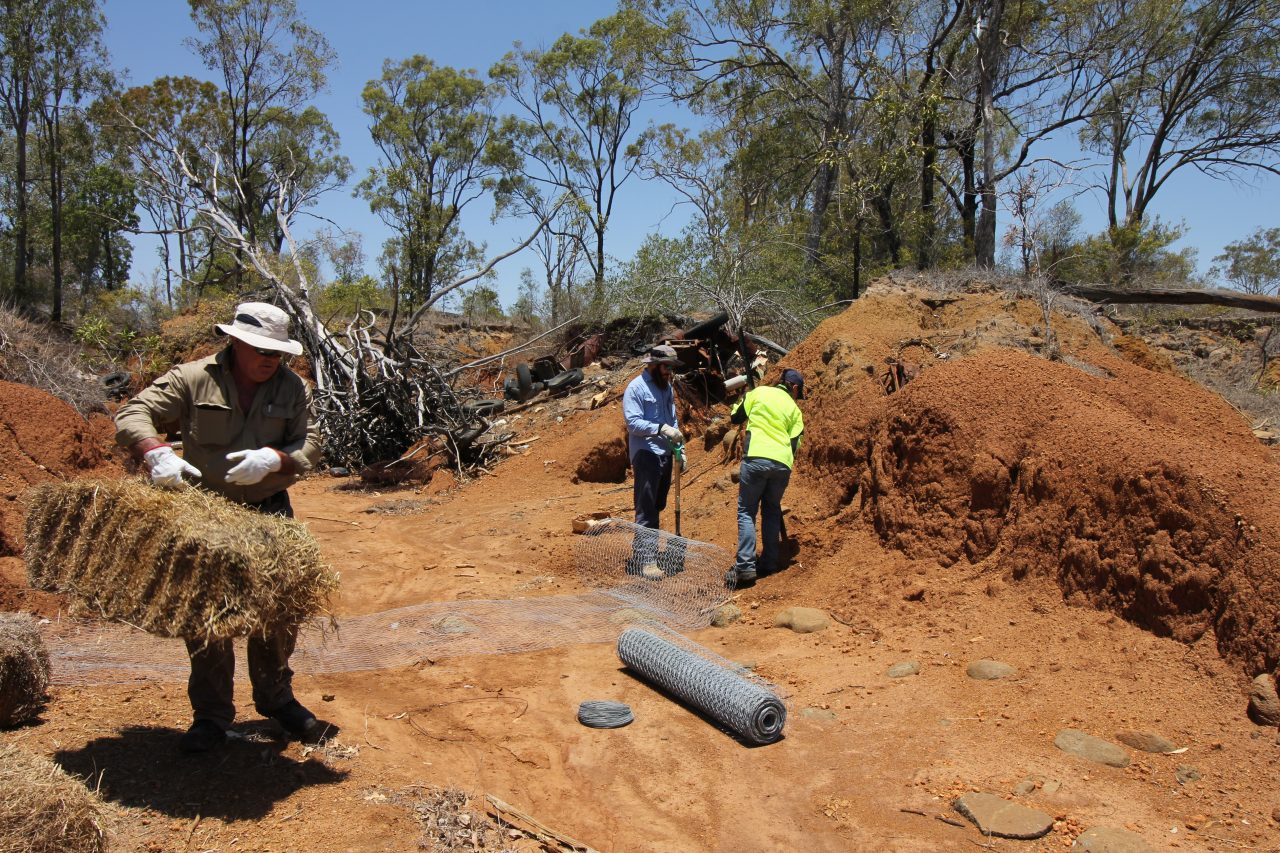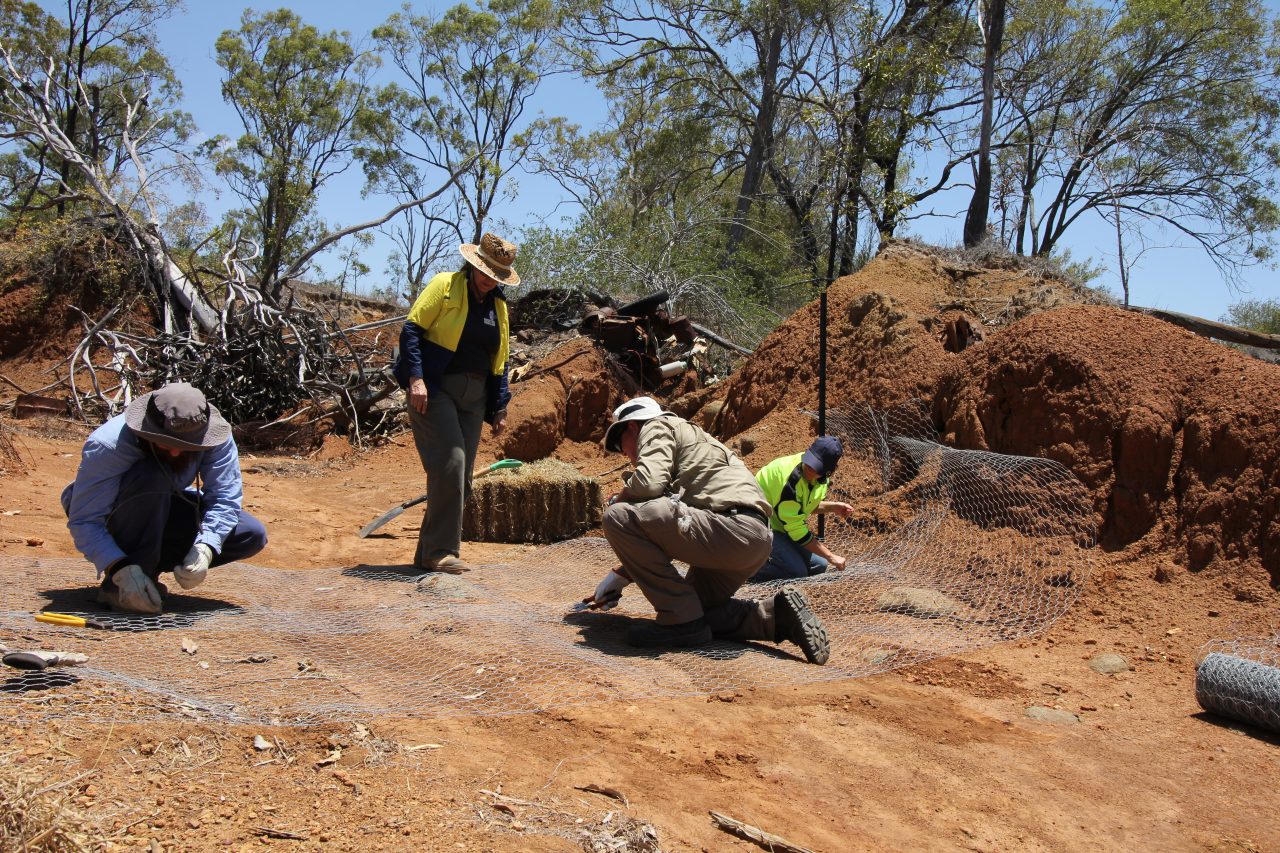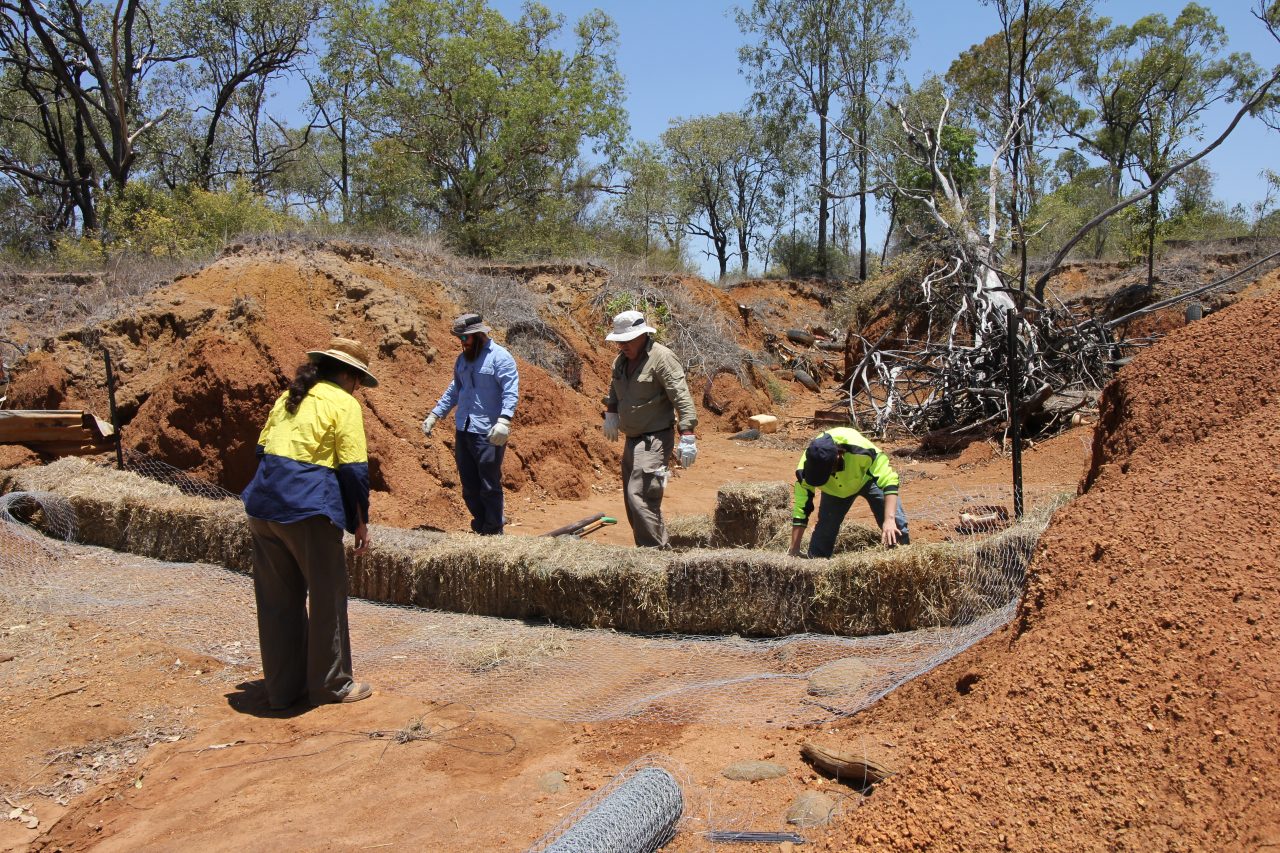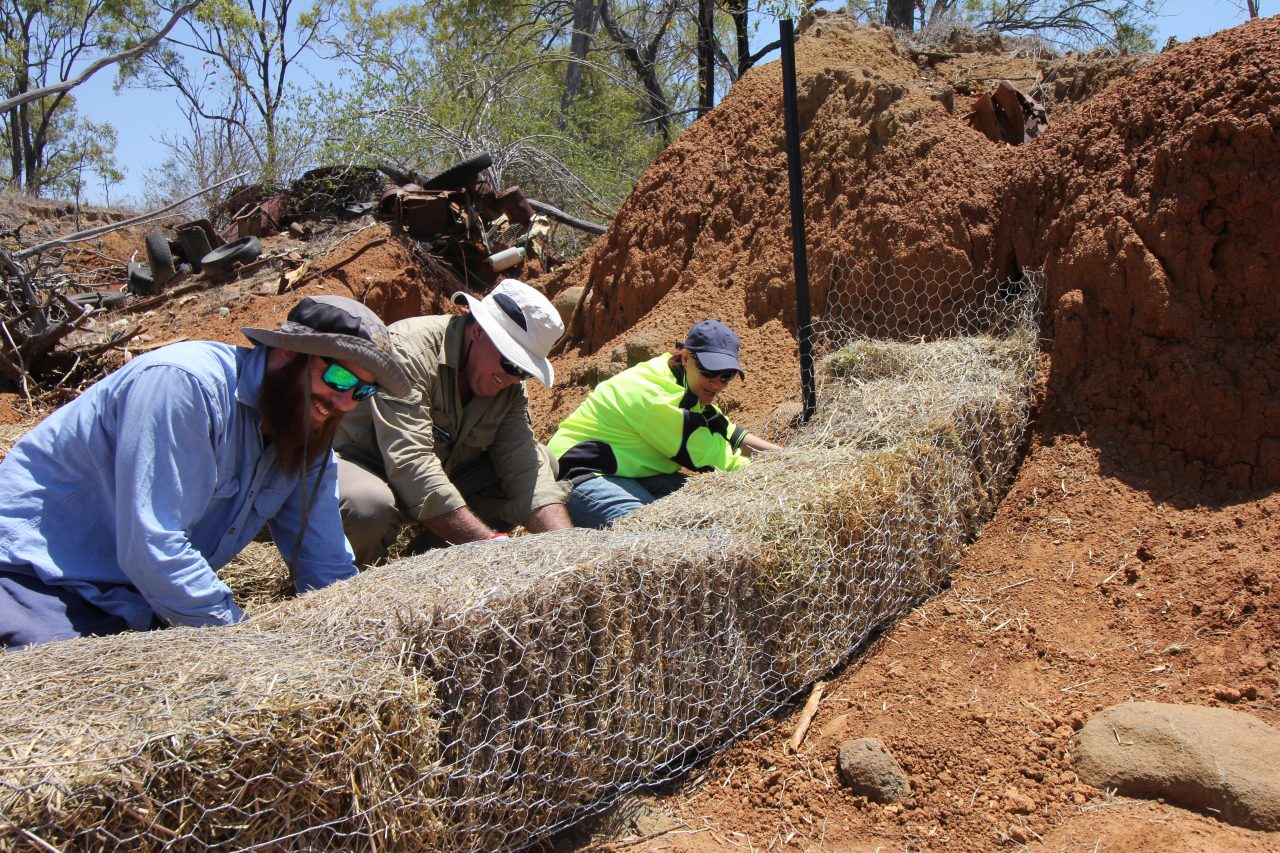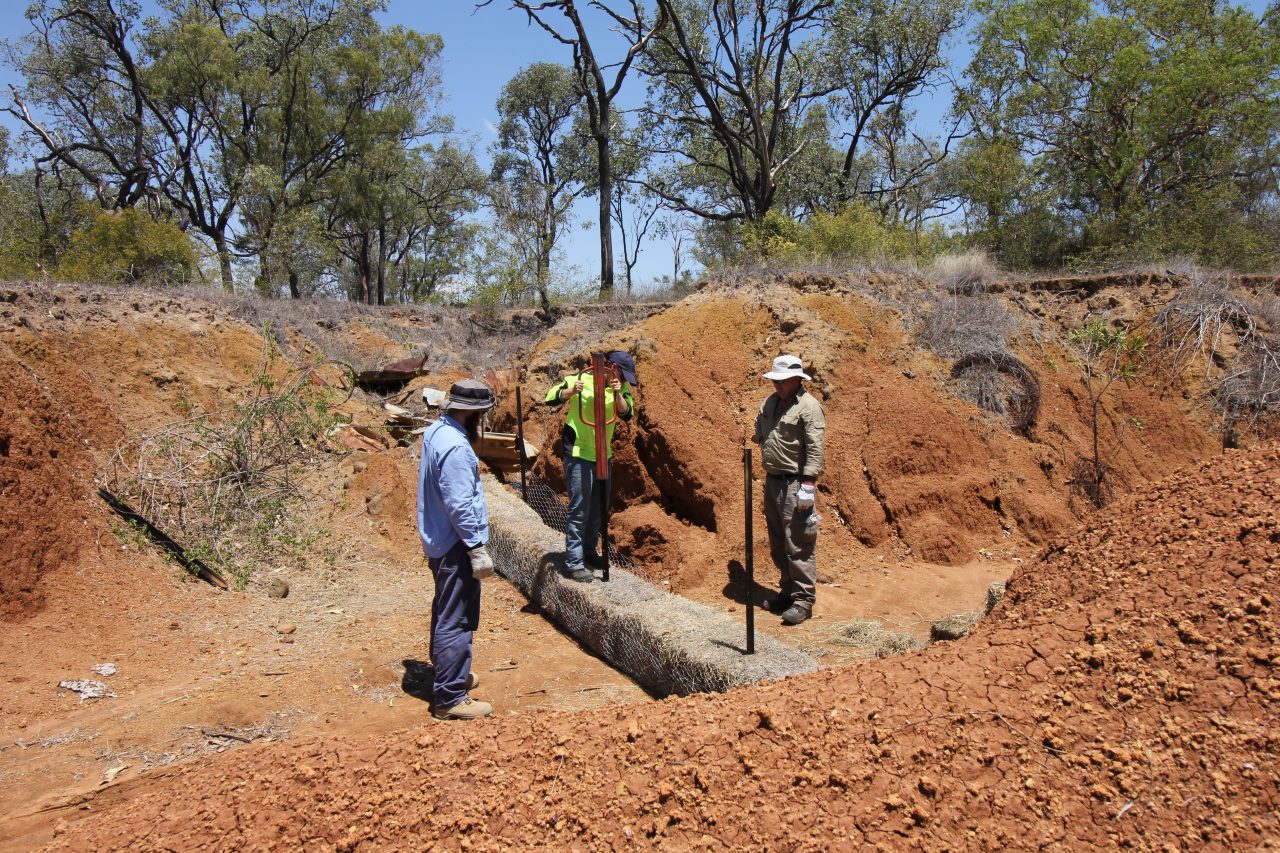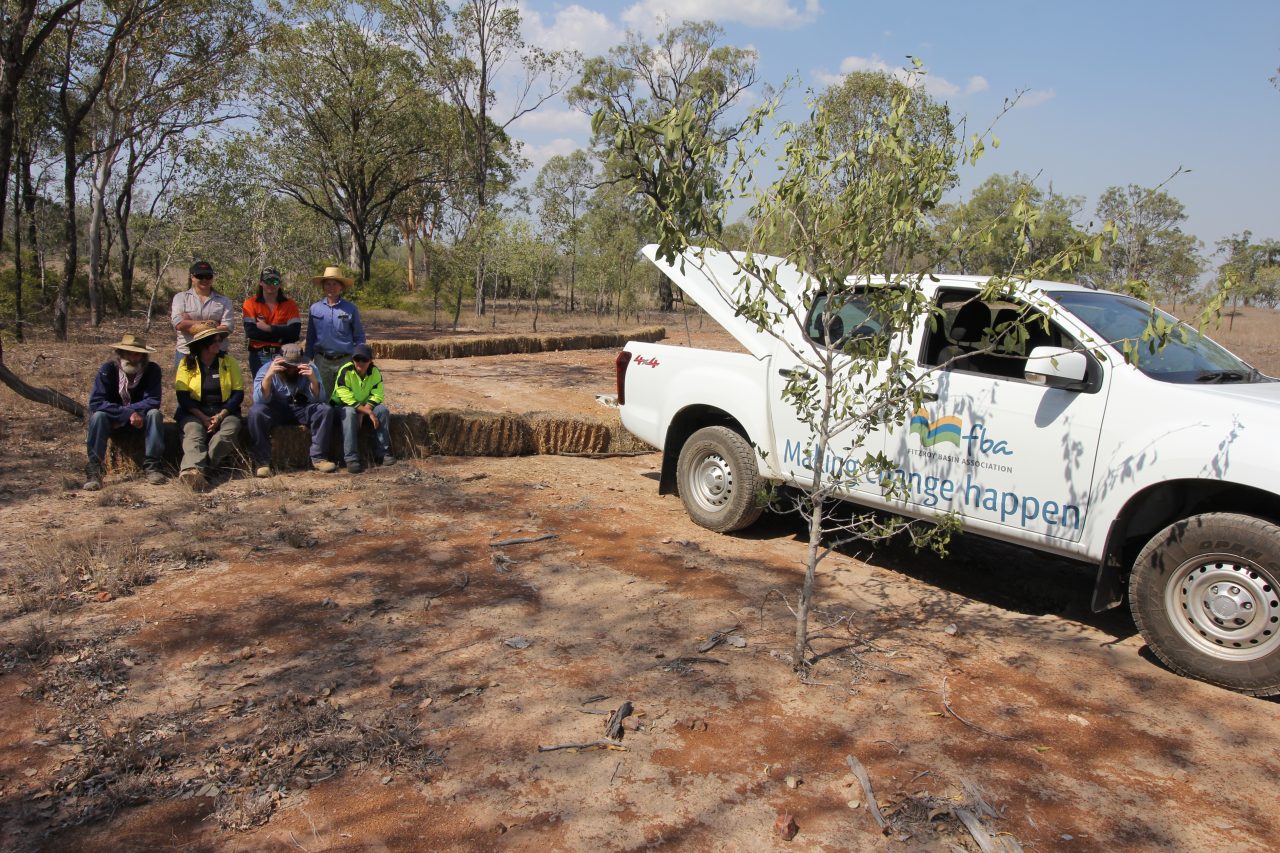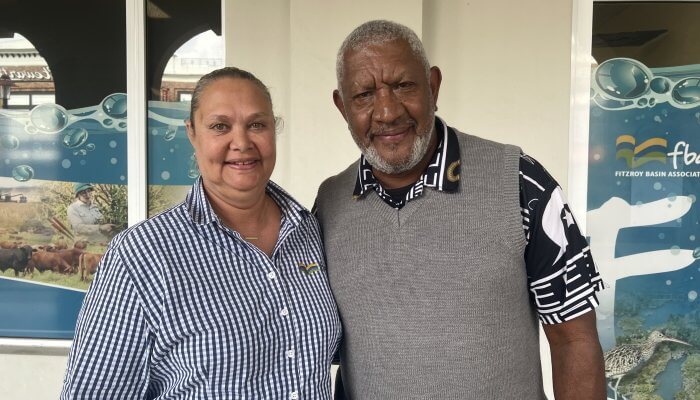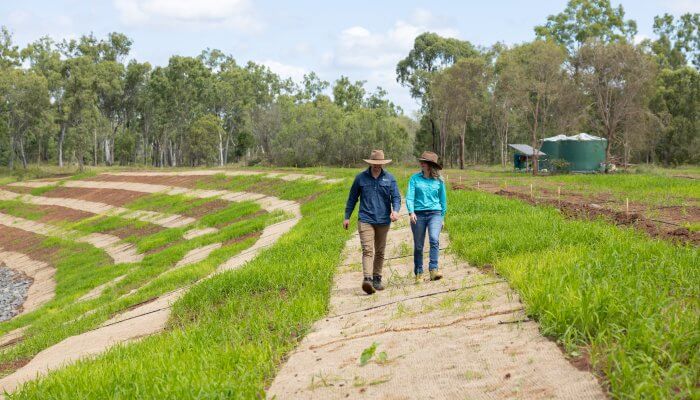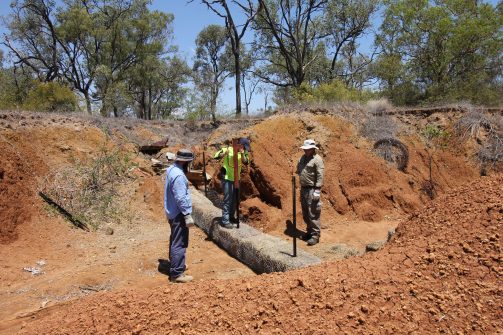
FBA shows CQUniversity students how to heal eroding gullies
Posted on November 28th, 2019
Seven CQUniversity students studying courses in Conservation, Land Management and Horticulture got the chance to put their gully remediation skills into practice earlier this month. Under the expert guidance of FBA’s Senior Land Management Officer, Bernie Claussen, and a warm welcome from a local property owner the group tried their hand at healing eroding land and improving the health of the Great Barrier Reef.
The Fitzroy Region is the second highest contributor of fine sediment to the Great Barrier Reef. While sediment is a natural part of the ecosystem, if excessive amounts reach the ocean, they significantly impact the health of inshore reefs and seagrass. Since FBA’s inception over 22 years ago, we have been working tirelessly to reduce negative impacts (like sediment) reaching the heritage listed site.
Studies show that a vast majority of unwanted sediment that is washed to the sea is from grazing activities or streambank, gully and hillslope erosion. To reduce this erosion FBA works with local landholders to make upstream changes and creates physical structures that heal eroding sites. Over the last five years FBA and landholders have treated over 140 hectares of eroding gullies by constructing over 652 erosion control structures.
Many different erosion control structures effectively trap sediment and stop it reaching waterways. Observing the eroded gully head and the catchment the students discussed which method would be most effective. Considering all environmental impacts and cost-effectiveness the group agreed on a Porous Check Dam (Leaky weir) made with wire mesh and filled with hay bales or small rocks.
A PCD is a low-cost, low-risk method of treating flatbed catchments. The anchored structure reaches from one side of the gully to the other. Filled with organic matter, the PCD slows the speed of the water, traps soil and filters out fine sediment. This encourages the pooled water to seep into the ground and hydrate the land, encouraging the growth of riparian vegetation.
Together the seven students did a fantastic job at building their first of many PCDs. Here are some photos from the day.





